By Eric G. Bachman
In and out of season, certain references often characterize the demeanor of a community, especially at tourist destinations. Ocean City, Maryland, for example has a census of nearly 7,100 residents1. But during summer weekends, the city hosts between 320,000 and 345,000 vacationers2, which is certainly a lot of people within a narrow 4.41 square-mile area. The exponential increase of visitors certainly presents wide-ranging challenges to the emergency services, especially with regard to increased occupant loads and accessibility challenges because of creative vehicle parking. The congestion experienced during the in-season certainly contrasts to the ghost-town, out-of-season atmosphere (photo 1).
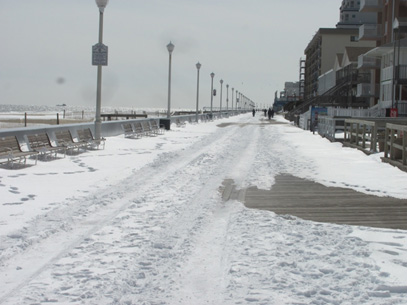
(1) The Ocean City, Maryland, boardwalk, although bustling with activity during the summer, is dormant in February. (Photos by author.)
This whole community season example is likely the exception rather than the rule; most communities do not see a significant increase in population. However, correlating these examples to seasonal changes at specific local facilities stresses the need for fire department personnel to analyze community hazards during each season. Often, fire departments initiate preplanning arbitrarily and at a convenient time. These efforts may not necessarily be coordinated during the facility “peak” operations time. But, if the fire department is not actively engaged with facility management, fire department personnel may not know when peak operations time is. For many facilities, things may not change throughout the year, and their operations may remain consistent. However, at other facilities, certain times of the year may be inherently more productive, bringing with it more hazardous conditions than during other times of the year.
Seasons
Most people are familiar with the four weather seasons of winter, spring, summer, and fall. On a personal level, think of the changes you make with the seasons. In the spring, you may purchase and stock fertilizer for gardening. As summer approaches, you increase the inventory of pool chemicals (if you have a pool), gasoline for the lawn equipment, and propane for grilling. In the fall and winter, you may make sure your stock of ice-melt and snow blower fuel are ready. You may also employ measures to winterize and better insulate your home. So, in a sense, your home, like Ocean City, has an in- and out-of-season look.
The variations in seasonal facility elements are broad and not exclusive to weather seasons. Every locale is different. The examples in this article may or may not apply, but they should be a catalyst for you to learn your local seasons. Recognizing seasonal influences can significantly change the profiles and hazards of the facilities and communities you protect. A fire department’s preincident intelligence program should consider fluid seasonal dynamics.
Population
One of the most recognized seasonal changes is in population. Obviously, the population areas such as Ocean City explodes, which correlates to increased occupancy loads at a variety of residential, assembly, and mercantile establishments. This creates a rippling effect of change for other host and supporting venues such as increased staff, expanded operational hours, and larger inventories. All of these facets affect the challenges a fire department will face during an emergency.
Non-tourist area businesses may also have operational seasons where production hours are expanded and the workforce is increased. Other venues have seasons where the staff changes including schools, college campuses, and their surrounding communities. Fire departments must be aware of changing circumstances to be as cognizant and prepared for potential challenges as possible.
Retail and mercantile establishments such as shopping malls also see season changes, especially during the holiday shopping season, which creates significant challenges to the emergency services such as access (photo 2). Extraordinarily high occupant loads can affect many response aspects such search and rescue and accountability. Egress can be impeded during emergent conditions, especially where transient occupants are unfamiliar with alternate egress points.
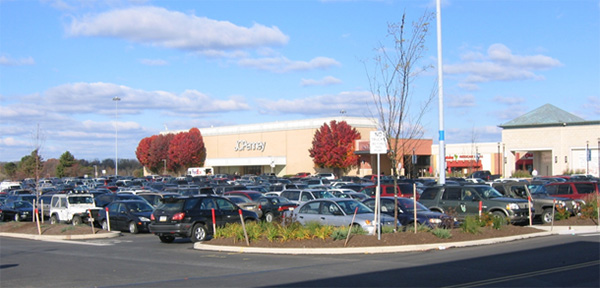
(2) Full parking lots during the holiday shopping season present access challenges and increased occupant hazards.
Patrons are not the only “people” hazard. Seasonal workers may not be familiar with facility emergency protocols; their limited employment may not come with a robust or reinforced training program on emergency procedures, areas of refuge, or initiating emergency operations shutdown measures.
Inventory: Housekeeping
Inventory of merchandise can be driven by season. In a retail establishment, the stock room will certainly be filled to capacity during the holiday shopping season. Product displays in isles will likely increase, causing challenges for search and rescue operations and hoseline management. This extra stock creates an increased fire load. High piles of box storage can present a collapse hazard especially if water soaked from an activated sprinkler (photo 3).
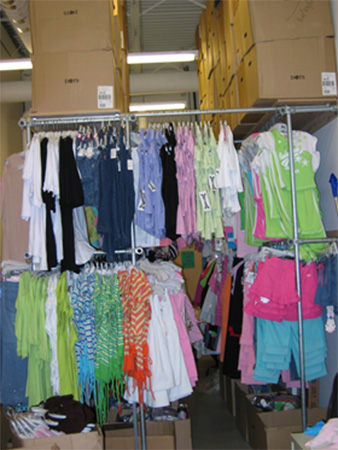
(3) Stock room of a clothing store is well stocked for the holiday season. Notice the boxes stacked to the ceiling.
Stock may be maintained outdoors, which is popular at home improvement stores (photo 4). This can present obstacles for positioning apparatus and deploying equipment. Outdoor storage, although potentially temporary, can inadvertently conceal suppression system appliances such as a fire department connection or standpipe. Outdoor storage may also block utility controls such as a gas valve.

(4) Storage or merchandise outdoors can present access challenges both into and egress from the building.
Likely, with increased merchandise comes increased waste. Rows of empty pallets, clumps of plastic wrapping, and torn down boxes can haphazardly be strewn in the back storage room. During a prefire tour at a department store three days before Christmas, I witnessed collapsed boxes piled in front of the rear exit door eye high. The manager explained that it was temporary because the baler was next to the exit door and staff did not have time to bale the boxes. Although the hazard was removed while I was there, assuredly this will continue.
Hazardous Materials
For many facilities, the use, storage, and manufacture of hazardous materials are consistent throughout the year. But in some business sectors, hazardous materials may be seasonal. In certain agricultural facilities, hazardous products such as insecticides, pesticides, herbicides, and fertilizers are maintained during specific periods of the year (photo 5). Preserving a good rapport with local industry is important to recognize specific use of hazardous materials.
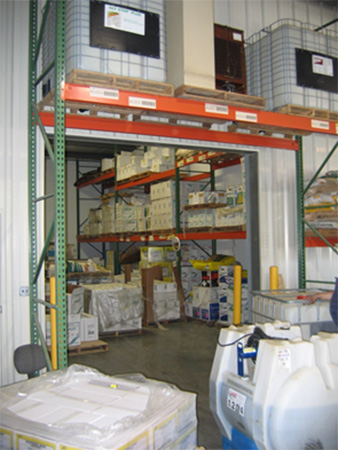
(5) New shipment of pesticides being placed in the pesticide storage area.
Granted, time constraints can inhibit consistent touring of a facility throughout the year. For certain facilities however, there is a tool to aid in learning about hazardous chemical usage. The Tier II Chemical Inventory Report [see my article “The New Tier II—An Expanded Preplanning Tool” (Fire Engineering, November 2013)] is a federally mandated document that applies to certain facilities that use, store, or manufacture hazardous substances. The document is required to be distributed to the first-due fire department by March 1 annually. The form includes specific criteria related to chemical dispositions for reportable inventories. One criterion is the number of days the material is on site. Some products may not be on site year round. The Tier II reports it will not list the specific time of the year on site; just the number of days. Chemicals reported on site less than 365 days should especially be cause for obtaining more information from the facility. The materials may have been on site late in the year or they may be seasonal, which requires and more intelligence to heighten awareness and preparation for when the hazard is present.
Special Attractions: An Example
Specific seasons can resurrect special attractions which may lie dormant for much of the year. Amusement parks, camp grounds, fair grounds are a few examples of seasonal attractions that present extraordinary challenges to the emergency services.
Some attractions are specific to a holiday. Locally in my area, a haunted-themed attraction operates from the middle of September to the beginning of November. The 33-acre parcel is comprised of a wooded area, several buildings, and a field that is farmed in the “growing” season. Although it is open for scaring nine weeks out of the year, only 27 days (Friday through Sunday each week) do customers, visitors, and volunteer character actors appear on site. Hundreds of scare-seeking customers can be on site, presenting many challenges to the emergency services.
Access to this complex is affected by increased traffic. Congestion around the facility is always heavy, and an open field becomes a complex parking lot, hampering emergency access. The number of people around presents a challenge in accountability and rescue. An emergency situation can cause panic that will result is unorganized egress. Two multistory barns (photo 6) original to the farmstead were converted into haunting attractions. Concealed spaces, flammable finishes, and a labyrinth layout should be cause for comprehensive preincident intelligence.
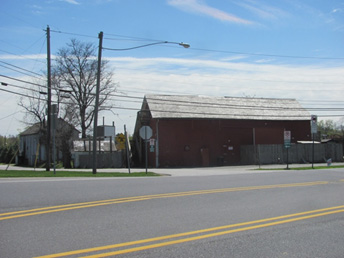
(6) The two barns were converted into haunted themed attractions where customers go through maze-like corridors while actors try to scare them. Primary occupant access to the structures is opposite side of the photo view.
Other hazards related to mobile attractions exist. Tractors and wagons are used for hay rides through tall (dry) corn stalk mazes. Some of the guided attractions present open flame props, and there are numerous buildings for food and merchandise sales (photo 7). The haunting season for this popular venue is relatively short, but the hazards it presents are extreme. The fire department must be prepared. The degree of hazard is not dependent on the number of days of its season.
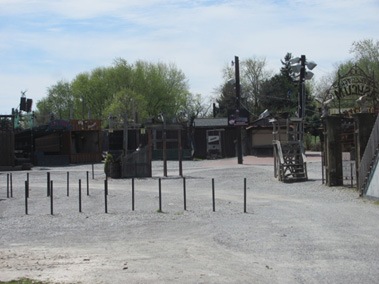
(7) Dormant most of the year, the courtyard of this haunted themed venue has many food and merchandise buildings.
The examples above are only a few potential seasonal challenges. The seasons represent time frames for many facets of preplanning. From weather to sports, seasonal dispositions can transform the conditions and appearance of a whole community and a specific venue. These seasonal changes can present many challenges to the emergency services. If not recognized beforehand, the fire department may be unprepared to effectively counter the hazard. Local circumstances will dictate seasonal hazards.
Fire departments respond to emergencies 365 days a year. Embracing a year-round approach to preincident preparedness will improve the readiness of a fire department to protect the permanent and transient population and better safeguard its personnel for seasonal hazards.
REFERENCES
- http://ococean.com/media.
- http://en.wikipedia.org/wiki/Ocean_City,_Maryland
ERIC G. BACHMAN, CFPS, is a 33-year veteran of the fire service and a former chief of the Eden Volunteer Fire/Rescue Department in Lancaster County, Pennsylvania. He is the hazardous materials administrator for the County of Lancaster Emergency Management Agency and serves on the Local Emergency Planning Committee of Lancaster County. He is registered with the National Board on Fire Service Professional Qualifications as a fire officer IV, fire instructor III, hazardous materials technician, and hazardous materials incident commander. He has an associate degree in fire science and earned professional certification in emergency management through the state of Pennsylvania. He is also a volunteer firefighter with the West Hempfield (PA) Fire & Rescue Company.

